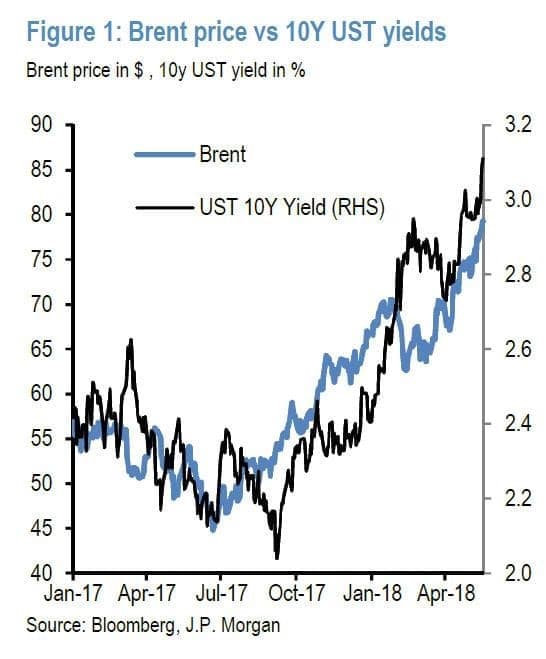How Tariff Shocks Impact The Bond Market

Table of Contents
The Mechanism: How Tariffs Affect Bond Yields
Tariff shocks directly and indirectly influence bond yields, a key measure of a bond's return. The primary mechanism involves inflation expectations and central bank responses.
-
Increased Import Prices and Inflation: Tariffs raise the price of imported goods, directly increasing inflation. This is because the cost of production for businesses using imported materials increases, leading to higher consumer prices.
-
Higher Inflation Expectations and Bond Yields: When inflation rises, or is expected to rise, investors demand higher returns on their bond investments to compensate for the erosion of their purchasing power due to inflation. This increased demand pushes bond yields upward. The higher the anticipated inflation, the greater the upward pressure on yields.
-
Central Bank Response and Interest Rates: Central banks typically aim to maintain price stability. Facing higher inflation fueled by tariff shocks, central banks may respond by raising interest rates. This policy tightening further impacts bond yields, generally causing them to rise. Higher interest rates make existing bonds less attractive, leading to lower prices and higher yields.
-
Flight to Safety: Tariff disputes often create economic uncertainty. Investors may seek the perceived safety of government bonds, reducing their demand for riskier assets, including corporate bonds. This “flight to safety” can lower yields on government bonds while increasing yields on corporate bonds.
Impact on Different Bond Types
Tariff shocks affect different bond types in varying ways, depending on their underlying risk profiles.
-
Government Bonds: Government bonds, often seen as a safe haven asset, may experience increased demand during periods of economic uncertainty caused by tariff shocks. This increased demand can lead to lower yields on government bonds as investors flock to their perceived safety. However, rising inflation due to tariffs can partially offset this effect.
-
Corporate Bonds: Corporate bonds, especially those issued by companies heavily reliant on international trade, are particularly vulnerable to tariff shocks. Higher input costs due to tariffs can strain corporate profitability, increasing the risk of default. This increased risk leads to lower demand and higher yields on these bonds. Credit spreads, which measure the difference in yield between corporate bonds and government bonds, are likely to widen during tariff shocks, reflecting the heightened risk associated with corporate debt.
-
Municipal Bonds: Municipal bonds, issued by state and local governments, are generally less sensitive to tariff shocks compared to corporate bonds. However, indirect effects, such as reduced economic activity or state budget constraints, can still influence their performance.
Geopolitical Implications and Global Market Effects
Tariff shocks extend beyond national borders, significantly influencing the global bond market and international investment flows.
-
Global Bond Market Volatility: Trade wars and escalating tariff disputes between major economies inject considerable uncertainty into the global economic outlook. This uncertainty translates into increased volatility in global bond markets, as investors react to changing risk perceptions and expectations.
-
Currency Fluctuations: Tariff shocks can trigger significant currency fluctuations. Changes in exchange rates can impact the value of foreign-denominated bonds held by international investors, leading to further market instability. A weakening currency in a country imposing tariffs can potentially make its bonds less attractive to foreign investors.
-
Economic Slowdown and Bond Prices: Prolonged trade tensions and tariff disputes can stifle economic growth globally. This slowdown typically leads to lower interest rates as central banks attempt to stimulate economic activity, resulting in higher bond prices. However, the impact on bond prices can be complex and depends on the balance between inflationary pressures and the overall economic outlook.
Case Studies: Analyzing Past Tariff Shock Events
Analyzing past instances of significant tariff increases provides valuable insights into their impact. For example, the historical data surrounding the Smoot-Hawley Tariff Act of 1930 (which significantly raised US tariffs) demonstrates a strong correlation between tariff increases and subsequent economic downturn. Studying the market response during these periods illuminates the potential consequences of future tariff shocks. Careful examination of these events using quantitative data analysis reveals patterns and helps refine predictive models for future occurrences.
Conclusion
Tariff shocks have a multifaceted impact on the bond market, primarily through their influence on inflation expectations, central bank policies, and investor sentiment. They affect different bond types differently, with corporate bonds often bearing the brunt of increased risk. The geopolitical implications are substantial, contributing to global market volatility and influencing international investment flows. Understanding this complex relationship between tariff shocks and the bond market is crucial for effective investment strategies. To effectively navigate the uncertainties associated with tariff shocks, it's essential to stay informed about evolving trade policies and to conduct thorough risk assessments. We encourage you to further your research into analyzing the bond market in the context of evolving trade policies and consider seeking professional financial advice to develop a personalized investment strategy that accounts for the potential impact of tariff shocks on your portfolio. Subscribe to our newsletter for regular updates on market analysis and investment insights!

Featured Posts
-
 Exploring The World Of Hotel Transylvania From Film To Theme Park
May 12, 2025
Exploring The World Of Hotel Transylvania From Film To Theme Park
May 12, 2025 -
 Two Celtics Players Hit 40 Points A Stunning Nba Game
May 12, 2025
Two Celtics Players Hit 40 Points A Stunning Nba Game
May 12, 2025 -
 Bayern Inter L Heure De Mueller En Quarts De Finale De La C1
May 12, 2025
Bayern Inter L Heure De Mueller En Quarts De Finale De La C1
May 12, 2025 -
 Jon M Chu To Helm Crazy Rich Asians Tv Series Adaptation
May 12, 2025
Jon M Chu To Helm Crazy Rich Asians Tv Series Adaptation
May 12, 2025 -
 Yankees Giants Series Whos On The Injured List April 11 13
May 12, 2025
Yankees Giants Series Whos On The Injured List April 11 13
May 12, 2025
